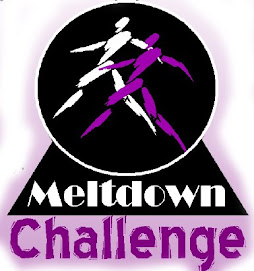by Tami Newton
Sheila Hall explained the five components of a total body workout:
1. Warm up at a slow pace for four to six minutes.
2. Strength training builds muscles.
3. Cardio; should get the heart rate up to 50% to 85% above the resting heart rate for at least 20 minutes.
4. Cool down for four to six minutes.
5. Stretching increases strength by 19%, relieves stress, increases flexibility and elongates muscles.
Jean-Francois Borny switched gears this week and brought examples of foods that are safe to eat, without pesticides or chemicals. Some of these foods included Great Value Old-Fashioned Oatmeal, Great Value Raisins, Original Gold Fish (make sure they do not have autolyzed yeast), organic yogurt, Cascadian Farms Organic Oat and Honey Granola, Great Value 2% Organic Milk, organic, cage free brown eggs (you can tell it is a natural egg, if there are spots), organic apples, Natural Cheetos and Back to Nature Cookies. He also showed us examples of whole grain already prepared pizza crusts and French bread from the bakery section of Wal Mart.
Sheila Hall cautioned us that some of these items may contain too many carbohydrates or sugar, if you are trying to lose weight. While they are all great natural choices, you must read the labels and see how they fit in with your meal planning to lose weight.
Jean Francois explained that we should eat sea salt, instead of table salt because there are more minerals in seal salt. Table salt is 99.9% sodium chloride, while sea salt only contain 98% of sodium chloride. The other 2% of sea salt contains approximately 80 important minerals like iron, sulfur and magnesium. Because of this difference in mineral content, sea salt taste a little different than table salt. One of the many advantages of sea salt is that it regulates blood sugar levels in the body.
Mr. Borny advocates the use of Portabello mushrooms, instead of hamburger meat. These mushrooms are low in sodium and very low in saturated fat and cholestrol. They are also a good source of thiamin, vitamin B6, Iron, Magnesium, Zinc, riboflavin, niacin, folate, pantothenic acid, phosphorus, potassium, copper, magnesium and selenium. Mushrooms are also a very good source of dietary fiber.
Jean-Francois suggested that we switch from black pepper (actually an irritant) to cayenne pepper. Cayenne pepper actually increases metabolism and feeds the vital elements in the cell structure of capillaries, veins, arteries and helps adjust blood pressure to normal levels. Cayenne cleans the arteries, as well, helping to rid the body of the bad LDL cholestrol and triglicyerides. Cayenne is also great for the stomach and intestinal tract. It stimulates the perisaltic motion of the intestines and aids in assimilation and elimination. It is superb for rebuilding the tissue in the stomach, facilitating healing with stomach and intestinal ulcers.
He also advocates a change from Canola and corn oil to olive oil. Olive oil contains vitamins E, K and A. Olive oil is not hydrogentated. Hydrogenation creates dangerous trans-fats found in margarine and many other packaged foods. Olive oil is high in polyphenols (a powerful antioxidant) and monosatured fat, which contributes to lowering bad cholestrol.
Jean explained that we should eat our almonds and other nuts in the raw form. Roasted nuts lose not only many of their benefits but some, like almonds, can actually become harmful. He listed the following benefits to eating raw almonds:
Vitamin E: an excellent antioxidant.
Monosaturated Fat: This the the "good" kind of fat that your heart and arteries love; it is the same type of fat as found in olive oil.
Protein: a quarter cup of almonds has 7 grams of protein.
Vitamin B2 (riboflavin): B2 plays an important role in energy management, especially in areas such as the heart, lungs, brain and other organs that are highly dependent on a rich oxygen supply.
Probiotic Properties: Finely ground almonds seem to significantly increase the levels of beneficial bacteria. However, this effect is not seen when the fat content was removed during almond preparation.
Weight Loss: A study, reported in a Whole Food's article about almonds, involving 8865 adults, found that those who consumed nuts at least two times per week were 31% less likely to gain weight, than those who seldom or never consumed almonds.
Below, find four recipes that Jean-Francois and his family enjoy:
Tomato and Avocado Sandwich
Sliced tomatoes (prefer vine ripe)
sliced avocados
large organic Romaine lettuce leaves
mayonnaise (use Kraft)
sea salt
cayenne pepper
One one large Romaine leaf, put two slices of tomatoes, two slices of avocado and one teaspoon of mayo. Season to taste. Wrap leaf and eat.
Brussels Sprouts Pops
Brussels sprouts
olive oil
sea salt
cayenne pepper
Slice the Brussels sprouts in half and remove two or three of the outer leaves.
Place the sprouts on a cookie sheet
Drizzle sprouts with olive oil and season with sea salt and pepper.
Place in preheated 400 degree for twenty minutes.
Remove from oven, when golden brown.
Serve warm.
Homemade Pizza
Healthy Pizza Bread (from Wal Mart bakery department-right across from the bananas)
Paul Newman's Alfredo Sauce or Paul Newman's Marinara Sauce
natural ham with nitrates
fresh slice tomatoes Mozzarella cheese
Spoon enough Alfredo or Marinara sauce to cover the pizza bread. Layer any natural ingredients onto the pizza bread. Season as desired. Bake in preheated 375 degree oven until cheese melts and crust start to brown.
Some other pizza toppings you can use include: pineapple (without added sugar or heavy syrup), jalapenos, portabella mushrooms, red bell pepper, Italian seasoning, parsley, thyme, rosemary, oregano, sea salt, cayenne pepper, etc. Just make sure it is natural and does not contain pesticides or chemicals.
Oatmeal Treat
Oatmeal (old-fashioned, 5 minute type)
cranberries or raisins (no sugar added)
natural peanut butter
raw almonds, cashews or walnuts
Prepare oatmeal. Add raisins/cranberries, nuts and peanut butter to oatmeal. This is a low glycemic, high fiber snack/breakfast.
Connie Harding reminded everyone that she needed to get weekly weights from each team leader. Do not forget to wear your t-shirts next week and be prepared to stay a little after to get your team photos made.
Polly Heil - Mealey, an iridologist, will be the guest speaker next Tuesday. Polly's topic will be "Health Through Your Eyes". Last year, her demonstration of digestion using panty hose and processed food versus natural, healthier foods was quite effective in showing the group how processed food slows down digestion and contributes to health problems.
Do not forget about the Curves Weight Management Class that is held every Tuesday, at 6:00 p.m., right before the Meltdown Meeting. See you next week!
Thursday, March 4, 2010
Subscribe to:
Post Comments (Atom)












No comments:
Post a Comment